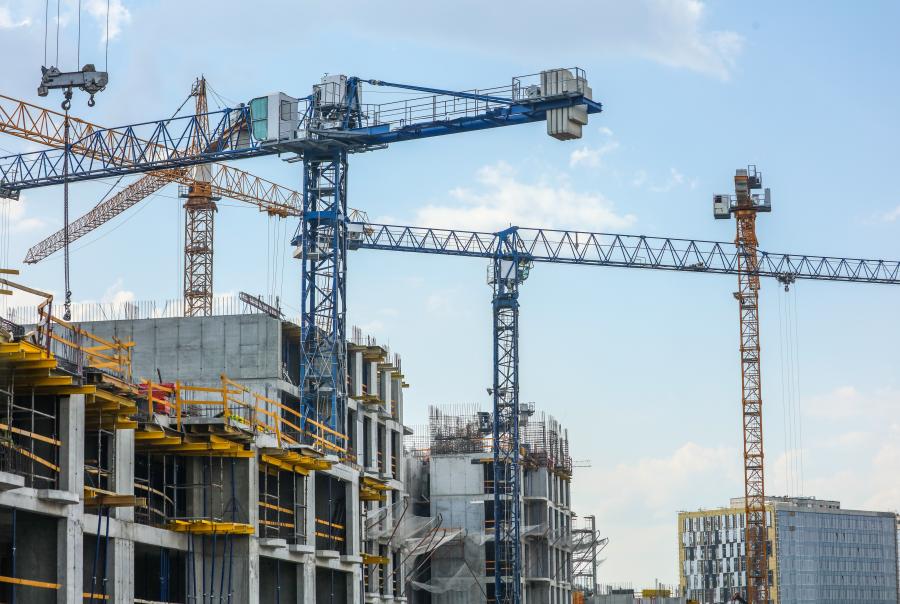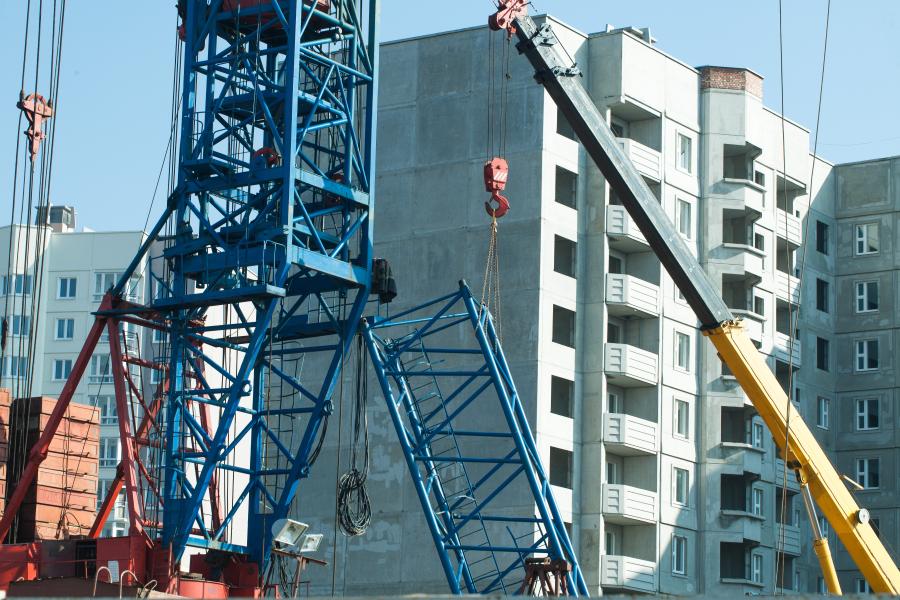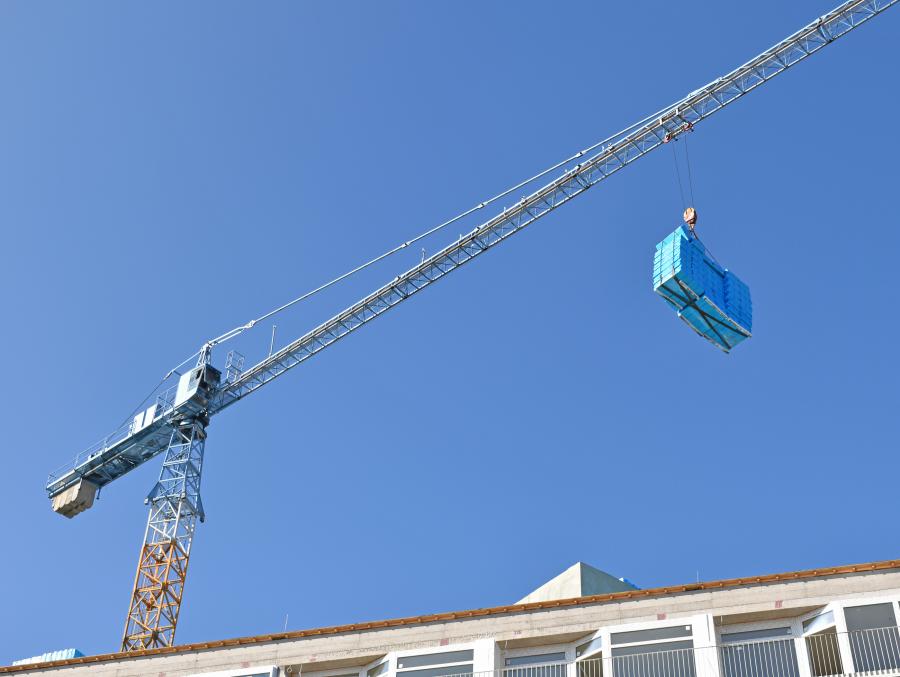
Mon April 8, 2024
Lucy Perry – CEG CORRESPONDENT
Washington State was poised to join other states regulating safety surrounding tower cranes. The state passed legislation in response to a deadly 2019 tower crane accident in Seattle, joining other major cities and states with tower crane regulations in place.
Passed by both the Washington house and senate, the bill addresses safety by "establishing permits for tower crane operation."
The rules regulate assembly and disassembly, establish a work zone during these phases and set criminal penalties for safety law violators.
"We think this creates a structure that is going to protect people," said Rep. Julia Reed who supported two tower crane safety bills along with Sen. Noel Frame.
Supporters believe the laws will help protect both workers and the public by requiring stricter safety protocols, reported Axios.com.
Those protocols include the work zone rule, which would require closing nearby streets when cranes are being assembled or disassembled.
An investigation of the Seattle accident that killed four people determined the contractors didn't follow manufacturer's dismantling instructions. It was found that the companies "prematurely" removed nearly all of the pins and sleeves that helped hold the crane together, reported Axois.
The new laws would require contractors to acquire a state permit before assembling, disassembling or reconfiguring a tower crane.
According to Axois, the measure would require a qualified supervisor to oversee assembly and disassembly. The law also mandates that local governments coordinate street closures in either phase of the tower crane's operation.
"Employers could be found guilty of a criminal misdemeanor if they let someone take apart or assemble a crane without qualified supervision," according to the bill's language.
Employers also would be liable for failing to follow a tower crane manufacturer's disassembly instructions.
Breaking Down the Bill
According to wacities.org, the new amendment is intended to give local governments more flexibility in their roles in tower crane operation. The language allows the city "to coordinate permitting schedules with applicants, while still retaining the city's ability to establish its own timeline."
An amendment to the bill also allows cities to develop a process for notifying neighbors of the assembly, disassembly or reconfiguration. This takes the burden off the city itself for going door to door in order to notify work site neighbors.
The legislation defines assembly/disassembly work zones as the total area the crane, components and attachments could reach if a collapse were to occur.
Work zones can change over the course of a project, noted wacities.org. Tower heights, boom length, attachments and crane loads all factor in.

Adobe Stock photo
The bill means "that cities will need to pay closer attention to active construction projects using tower cranes within their jurisdictions," said wacities.com.
This monitoring is required for issuing the right permits and avoiding potential liability for accidents.
"Since the size of an assembly/disassembly work zone can change over the course of a project, cities will need to keep an eye out for these changes and adjust permit issuances accordingly."
And cities will need "to play an active role" in giving notice to nearby residents within the ever-changing work zone of the tower crane activity.
"Cities will also need to ensure they are able to process permits in a ‘timely manner,'" according to the law, though that particular term is undefined.
Multiple permits over the life of the construction project may be a reality because of the ever-changing size of the tower crane operation work zone.
"The contractor will need to apply for new permits before they can assemble, disassemble or reconfigure their crane and change the size of the work zone," according to the bill.
What Happens in Other States
Other states and major cities have addressed the tower crane operation process through rules and regulations. Here is a sampling:
In August 2023, New York City's department of buildings updated its required protocol for third-party tower crane erection certifications. Erecting a tower crane is only permitted after the engineer of record (EOR) submits, and the city's cranes and derricks unit reviews, required documentation.
The cranes & derricks unit then grants crane notice approval to the equipment's applicant.
"To be granted a crane notice, the EOR must submit third-party certifications, which include certification letters, reports and documentation."
The rule states that provided third-party certifications must include certification letters from the EOR, inspector and owner. They must contain equipment and project references, such as the CN approval number, crane device number, serial number and model number.
The letters also must include project location as well as all other relevant documentation outlined in the protocol.
After a 1989 accident killed five in San Francisco, the state enacted some of the toughest tower crane laws in the nation, according to TorkLaw. Since then, the state has been looked to as a model for tower crane safety regulation.
The cranes must be inspected three times before the first load is lifted, notes TorkLaw.
"State-certified inspectors perform the first two inspections," and Cal/OSHA completes the third assessment. Once the crane is in operation, it must undergo intensive inspections every six months.
In between formal inspections, crane operators are required to conduct daily checks of the tower crane. Operators also must perform more rigorous inspections for every 750 hours of tower crane operation.
Inspectors must be on the scene when the tower crane is being jumped or dismantled.
Before the crane lifts its first load, a Cal-OSHA inspector must look for loose bolts, cracked welds, rust, fail-safe device problems or frayed cables.
"OSHA requires that the tower crane be inspected only once a year," reported TorkLaw. "After the 1989 catastrophe, California passed legislation requiring inspections every six months."
That legislation also mandated that operators submit drawings of the crane's placement before receiving a permit.
"California law also requires that inspectors of the tower crane be independent," said the law firm.
Inspectors cannot be considered employees of the owner or contractor and can have no financial interest in the development.
TorkLaw noted that, "despite California's stringent laws and regulations of tower cranes, Cal-OSHA inspectors routinely find safety violations."
In most inspections, detected defects can run from a minor problem to a major condition and some safety breaches result in formal citations or fines.
"Some are so serious that the crane owner must make immediate repairs or shut down the operation on the spot, costing the developer potentially hundreds of thousands of dollars."
In 2008, the Associated Press analyzed "wildly varying rules governing construction cranes." Some, noted the news service, rely on federal guidelines.
Beyond operator certification, in Nevada state law calls for clear zones during assembly and disassembly, or hazardous lifts.
"They also demand annual certification of cranes' mechanical lifting parts, plus certification each time a tower crane is erected," according to the AP.
Fifteen days before a builder puts up or dismantles a tower crane, the company must notify Nevada OSHA, bring in building plans and meet with OSHA officials.
Canada's New Approach
The government of Ontario, Canada, opened this year with an overhaul of its crane regulations, which include tower cranes.
The updates reflect a commitment from stakeholders with a goal to keep operators and the public safe. The new provisions under the Occupational Health and Safety Act (OHSA) include new installation, inspection and record-keeping regulations.
Some "significant" changes came after efforts by safety advocates, Mike Gallagher, business manager, IUOE Local 793, told Daily Commercial News.
"It's a fairly good overhaul of the regulations. I mean, the real deep dive was done by industry, including employers and the union and engineers."

Adobe Stock photo
Considered key amendments by the local ministry are the clarification and addition of design, installation, inspection, maintenance and record-keeping rules.
The new language requires more comprehensive tower crane inspections and introduces new references to national standards in tower crane design and operation.
Gallagher also considers a key change the decision to incorporate more external materials into the OHSA Green Book, to reduce redundancy.
"A lot of the changes in terms of inspection of crane components and whatnot were already referred to in manuals that the operators had to put in place."
Gallagher said now that it's all been transferred into the OHSA, the regs are easier to locate.
Widespread consultation among the crane industry went into developing the reform package, he said.
Input included the formwork sector, engineers, the Ontario Crane Rental Association and individual general contractors.
He believes the cooperation among stakeholders will continue as parties work towards education and implementation goals.
At the End of the Day
Historically, crane accidents were treated as economic losses, said Lawrence Shapiro, crane consulting engineer.
And while the economic impact has not diminished, today the social cost has increased. "Society is … more inclined to assign blame," he said.
"Crane accidents will always occur, as humans, materials and machines are imperfect, hazards are sometimes hidden and nature is fickle."
The burden of our profession and our industry is to learn from things that go wrong, develop corrective means and strategies and apply them, said Shapiro.
He believes, "laws and standards are merely one set of means to mitigate" the potential for loss. CQ
 Cranes Equipment
Cranes Equipment Articles
Articles Email Updates
Email Updates Sell Your Machines
Sell Your Machines

 Cranes Equipment
Cranes Equipment Cranes Dealers
Cranes Dealers Cranes Articles
Cranes Articles Email Updates
Email Updates Sell Your Machines
Sell Your Machines